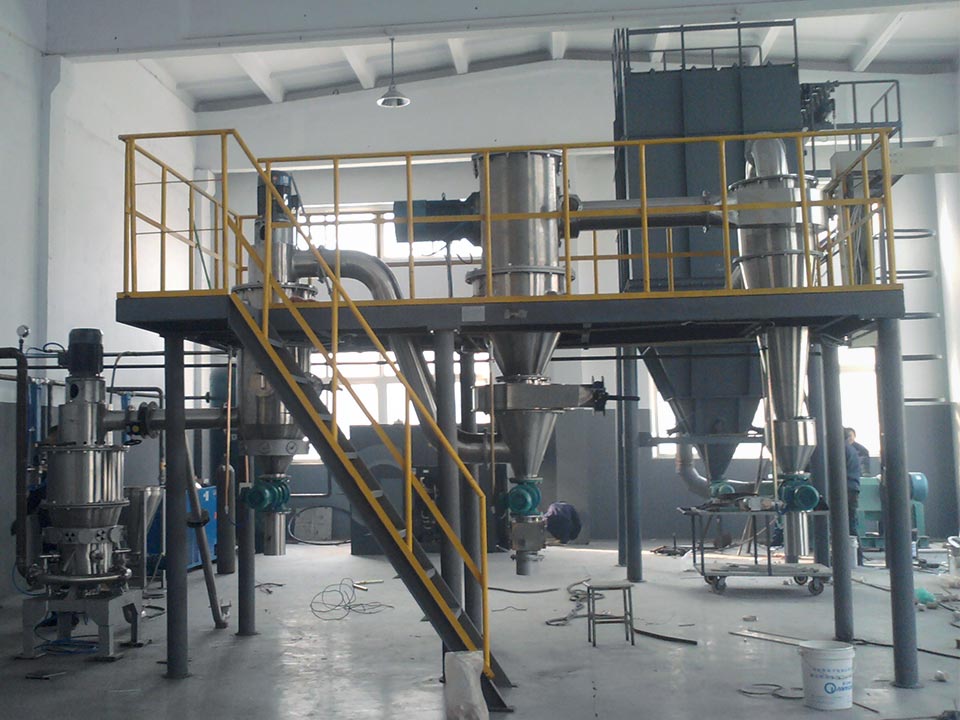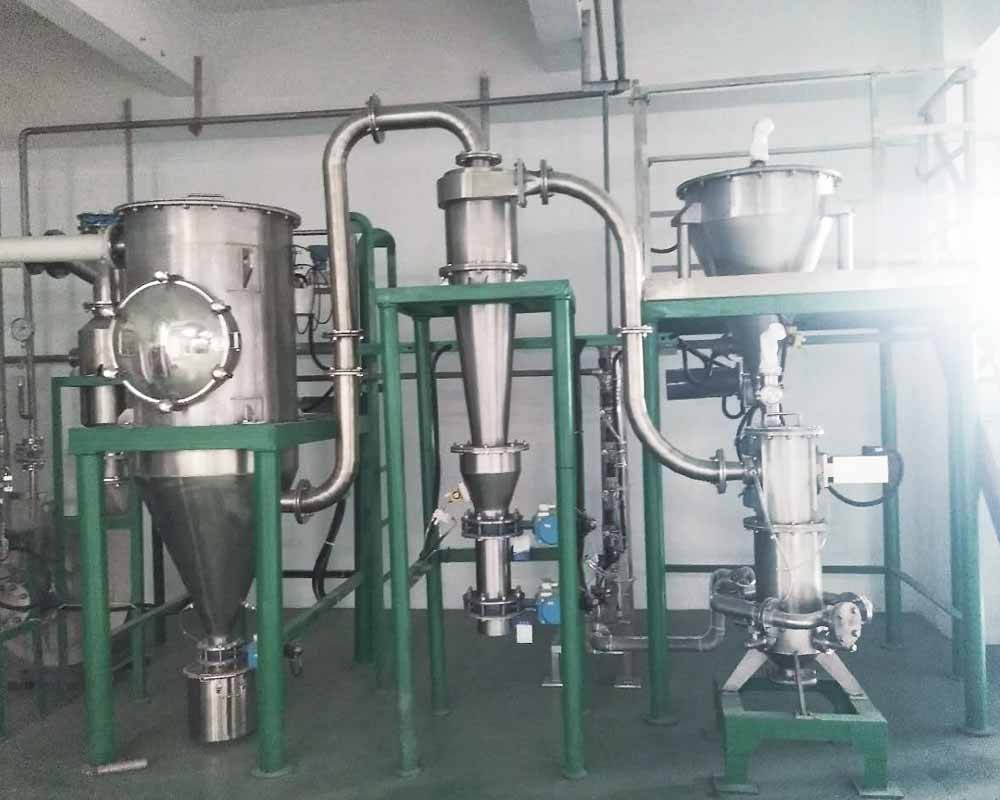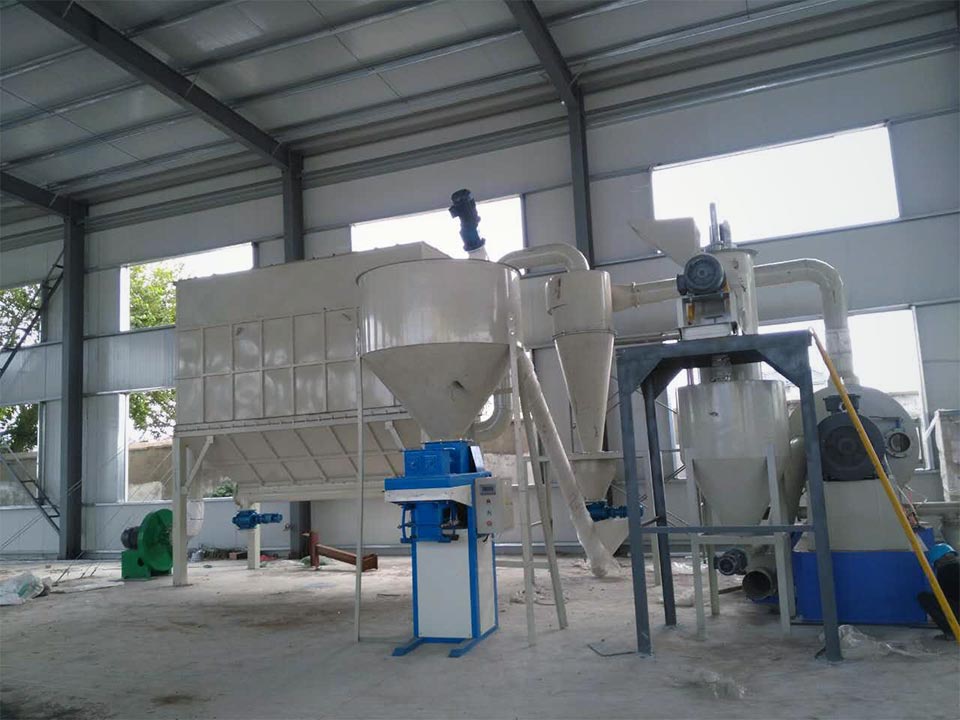Brief introduction of cyclone dust collector
The cyclone dust collector is a dust collector that uses the centrifugal force in the high-speed rotating dust-containing airflow to separate dust from the air. Because of its simple structure and easy production, it is widely used. Compared with the gravity sedimentation chamber, the particle size of the dust to be processed is smaller, and the space required to process the same amount of gas is also much smaller. However, the pressure loss of the cyclone dust collector is generally higher than that of the settling chamber, so it consumes more power.

The advantages of cyclone dust collector are:
(1) The equipment has a simple structure and low cost;
(2) The device has no moving parts and is easy to maintain;
(3) It can withstand high temperatures, for example, it can withstand temperatures up to 400°C. If special high-temperature materials are used, it can withstand higher temperatures;
(4) It can withstand high pressure (positive pressure and negative pressure) to collect dust from high-pressure gas;
(5) After the dust collector is covered with a wear-resistant lining, it can be used to purify the flue gas containing high abrasive dust.
The disadvantages of cyclone dust collectors are:
(1) The efficiency of capturing fine dust (less than 5μm) is not high;
(2) Since the dust collection efficiency decreases with the increase of the cylinder diameter, when the processing air volume is large, multiple cyclone dust collectors must be used. If the setting is improper, it will have a greater impact on the dust collection performance.
The housing of the cyclone dust collector is composed of an outer cylinder and a cone. The top of the outer cylinder is closed, and there is an exhaust pipe in the center. The gas inlet pipe is located on the side of the cylinder and is tangent to the outer cylinder. The bottom of the cone is provided with an ash warehouse and a lock air gate. The dust-laden gas enters the device along the tangential direction of the outer cylinder from the air inlet at a higher speed (usually 12-25m/s), and produces a strong rotational movement along the annular space outside the inner cylinder (exhaust pipe). , Divided into two swirling airflows upward and downward. The upward airflow reaches the top cover and then spirals downwards. The downward airflow spirals between the inner and outer cylinders due to the restriction of the inner and outer circle and the upper cover, forming an outer swirling flow. During the rotation, most of the dust particles are thrown to the periphery of the cylinder under the action of inertial centrifugal force, hit the wall of the vessel, lose kinetic energy, slide down the wall, and fall into the ash bin. The dust particles accumulated in the ash bin are automatically discharged through the gate. When the descending outer swirling airflow follows the bottom of the cone, it turns back and rises, forming a bottom-up spiraling inner swirling flow, and is discharged from the top as purified gas through the central exhaust pipe.
Factors affecting the performance of cyclone dust collector
There are many factors that affect the performance of the cyclone dust collector. Generally speaking, one is the structure factor, and the other is the operating condition factor.

The structural factors are generally divided into four aspects:
- Entrance and top
1) The inlet form is generally divided into two types, direct inlet and vortex inlet.
2) The top of the dust collector is usually flat, but there are also raised and spiral types.
- Exhaust pipe
The exhaust pipe of ordinary cyclone dust collector is mostly cylindrical and concentric with the body of the dust collector. The shorter the insertion depth of the exhaust pipe, the lower the pressure loss.
- The length and diameter of the dust collector
Generally, when the ratio of length to diameter is greater than 2, it is called a high-efficiency cyclone dust collector; when it is less than 2, it is a low-type cyclone dust collector. The former is more efficient because the dust stays in it for a long time.
- Roughness of the inner wall
The rougher the inner wall of the cyclone dust collector, the easier it is to cause vortex, which will increase fluid resistance and reduce dust collection efficiency. Therefore, in the manufacturing, attention should be paid to the smooth welding seam, and the cylindrical and conical heads should strive to be smooth.
Factors in operating conditions
The operating conditions of the dust collector include factors such as gas flow, temperature, dust particle size and density.
- Gas performance
1) Gas flow: The efficiency and resistance of the cyclone dust collector are related to the flow rate of the gas into the dust collector.
2) Gas temperature: The gas temperature directly affects the viscosity coefficient of the gas. The coefficient of viscosity increases with the increase of temperature, while the dust collection efficiency decreases with the increase of temperature.
- Dust properties
1) Particle size of dust
The efficiency of the cyclone dust collector is very sensitive to the particle size of the dust. Generally, the efficiency of particles smaller than 5μm is low, while the dust collection efficiency of particles larger than 20μm is more than 90%.
2) Density of dust collection
The higher the dust density, the higher the efficiency; when the density reaches a certain value, the smaller the particles, the greater the influence of density. However, the impact on the actual dust collection range of the dust collector is relatively small.
3) Dust concentration
The dust concentration has an impact on the efficiency and resistance of the dust collector. The effect of dust concentration on the performance of the dust collector is that when the dust concentration is high, the friction loss between dust particles increases, the rotation speed of the airflow decreases, and the centrifugal drop occurs, which reduces the resistance and efficiency; but on the other hand, On the other hand, the increase of the concentration will cause the agglomeration of dust, which will increase the dust collection efficiency.
Therefore, only a sufficient understanding of the factors that affect the performance of the cyclone dust collector can better avoid performance loss and make the dust collection efficiency of the cyclone dust collector better.
Factors affecting the efficiency of cyclone dust collector
The cyclone dust collector enters the dust collector from the tangential inlet. The airflow rotates in the dust collector. The dust particles in the airflow move to the outer wall under the action of centrifugal force, reach the wall surface, and move along the wall under the action of the airflow and gravity. The wall falls into the ash hopper to achieve separation. There are several factors that affect the dust removal efficiency of the dust collector:

1. Air inlet area: The air inlet is an important part of the dust collector, and it also affects the efficiency of dust removal. The smaller the air inlet area, the higher the air velocity and the higher the dust removal efficiency, which is beneficial to the separation of dust and other things;
2. Inlet wind speed: Generally, the inlet wind speed is maintained at 12-25m/s. When it is lower than 12m/s, the dust removal efficiency will decrease. When it is higher than 25m/s, the dust removal efficiency will not increase significantly, but the resistance loss will increase and energy consumption will increase. . The higher the wind speed in this range, the greater the resistance and the higher the dust removal efficiency;
3. The diameter and height ratio of the cyclone cylinder affect the efficiency of the dust collector: at the same tangential speed, the smaller the diameter of the cylinder, the greater the centrifugal force and the higher the dust removal efficiency. If the diameter of the cylinder is too small, the particles will easily escape, and the dust removal efficiency will be lower. Therefore, the diameter of the air inlet of the dust collector is not easy to be too large, just appropriate, and the near air port cannot be too small. When the dust particles are large, it is easy to block the air inlet;
4. Properly lengthening the cone of the cyclone dust collector is also beneficial to improving the dust removal efficiency;
5. The influence of the diameter and depth of the ash discharge port: the smaller the diameter of the ash discharge port, the smaller the airflow, and the greater the difficulty of dust discharge, so the speed and diameter of the outlet air discharge should be accelerated;
6. Tightness of the lower part of the dust collector: Generally, there are two types of double flap valves or star-shaped unloaders for the air lock device at the lower part of the dust collector. The static pressure inside the precipitator gradually decreases from the outer wall to the center. Even if the precipitator is under positive pressure, the bottom of the cone may be under negative pressure. Air leakage from the lower part of the dust collector will take away the dust falling into the ash hopper again, which will significantly reduce the dust removal efficiency. When the air leakage reaches 15% of the air volume processed by the dust collector, the dust removal efficiency is almost reduced to zero;
7. Gas temperature: The gas viscosity increases as the temperature rises, so that the centripetal force on the dust particles increases, and the separation efficiency decreases. Therefore, the dust collector efficiency of the cyclone dust collector decreases with the increase of the gas temperature or viscosity.
